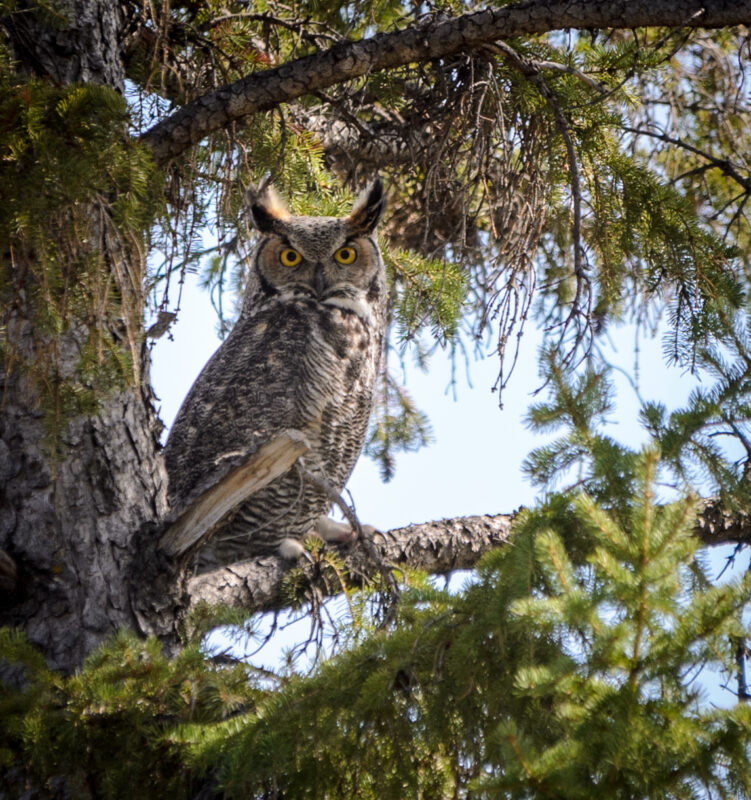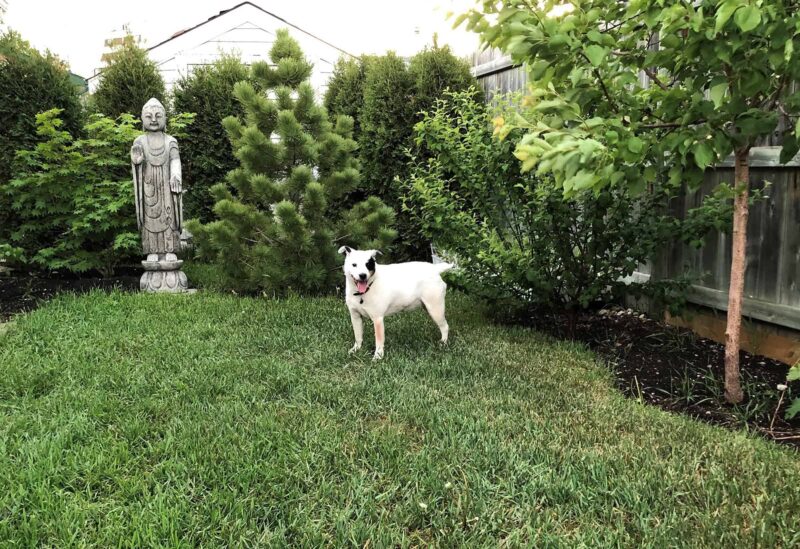Create year-round beauty and shelter for wildlife
Pinus, pronounced PY-nus, is the ancient Latin name for a pine tree. Species in the Pinus genus are unique among conifers. Long-lived tress, their distinctive needles are grouped in bundles called fascicles. Evergreen conifers provide a beautiful backdrop for other plants in the landscape. Their strong shape is useful for screening a view. Often, though, pines are overshadowed by the popularity of species in the Picea (spruce) genus.
“What separates pine from spruce, firs, and other coniferous trees is that as pines age — for example, Ponderosa pine and especially Scots pine — they tend to naturally lose their lower limbs,” says Dave Klassen, owner of Shannon Oaks Tree Farm, a wholesale grower in Morden, Manitoba, that specializes in the production of conifers.
Initially, Klassen says, these varieties offer a full, conical shape that resembles the shape of spruce. As the Ponderosa pine matures, its pyramidal crown flattens out to a broad, open crown. Both Scots (or Scotch) pine, a two-needled pine with blue-green needles, and Ponderosa pine, a dark green, three-needled pine, bring a fresh component to the landscape with their unique shape that differs from spruce, which has branches to the ground and stays narrow at the top.
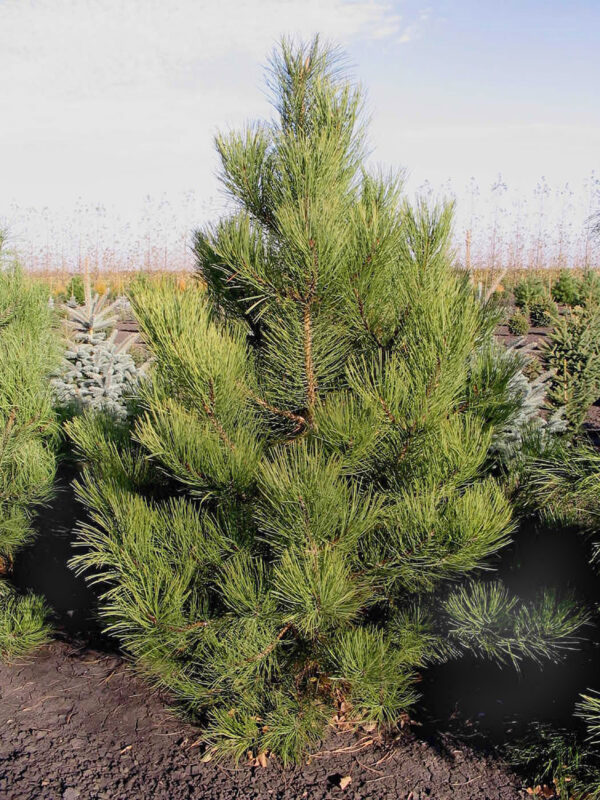
Swiss stone pine with soft, five-needled, blue-green foliage is a gorgeous tree with a very formal and pleasing shape, says Klassen. “Swiss stone pine tends to retain a conical shape a little more than Ponderosa and Scots pine, and stays fuller from the ground up. However, it tends to be a little narrower. It is just a beautiful pine.” Swiss stone pine is very slow growing, but it is also more compact and narrower than Scotch pine or Ponderosa pine.
“Pine will usually shed a fairly substantial needle crop every year and that’s the other characteristic which makes it different from spruce or fir,” says Klassen. The thick carpet of pine needles breaks down slowly and benefits the trees in terms of helping stabilize moisture, he says. At Augusta National Golf Club in Georgia, where the pine is the most abundant tree, the beauty of the rich, auburn colour of the pine needle beds are on full display during The Masters tournament and are a great source of pride.
Often people think that pine needles will make the soil too acidic, says Klassen, but the impact on soil pH is minimal.
Both Scots pine and Ponderosa pine feature ornamental, thick bark. Scots pine (Pinus sylvestris) develops an orange-brown, shaggy bark, says Klassen. The exfoliating bark is attractive in the winter garden. Ponderosa pine (P. ponderosa) has more of a reddish colour in the furrowed bark with vertical dark stripes, so it is quite showy, says Klassen.
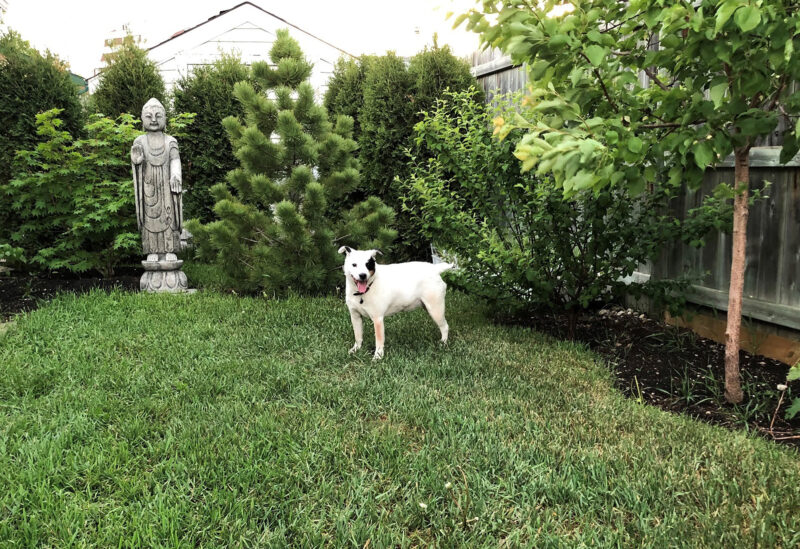
Patience
If you are in the market this spring for an evergreen tree, regardless of the species, it may be challenging to find anything larger than a seven-gallon or five-gallon specimen. John Leperre is a regional sales manager for Bylands Nursery, a leading producer of plants located in West Kelowna, B.C. “The tricky thing with many evergreens is that they can be slow growing. It takes longer to produce them. We have seen this unprecedented demand for trees in the past few years so there is going to be some catching up in the nursery industry to produce these plants.”
Leperre admits that spruce is a clear favourite for many homeowners. “But I often steer people in the direction of pine trees, such as the Scots pine and Swiss stone pine, which are just gorgeous.” Another advantage of Pinus species are that they can grow in acidic or alkaline soils.
A former tree and shrub manager at Shelmerdine Garden Centre, Leperre resides in Winnipeg. He has planted a Swiss stone pine in his Winnipeg backyard against a backdrop of ‘Skybound’ cedars. “I love the contrasting texture of the silvery-bluish needles of the Swiss stone pine against the green foliage of the ‘Skybound’ cedars.”
If the large size of conifer you desire is difficult to come by this spring, Leperre recommends creating a layered garden that builds on the attributes of your newly purchased tree and provides contrasting textures and colour. “If the mature size of your evergreen isn’t going to happen for many years, think about what you can plant alongside it that will give you pleasure and enjoyment in the interim.”
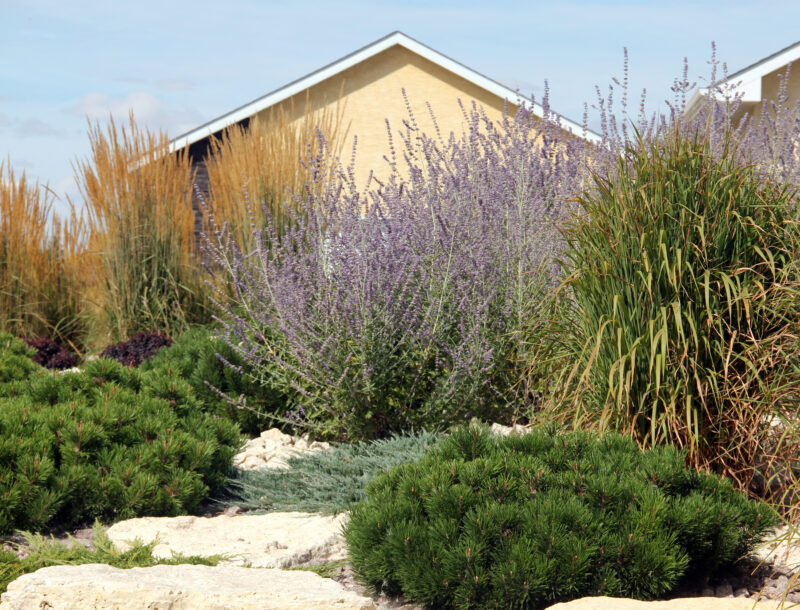
Creating a scene
Green should always be the dominant colour in a landscape, says Leperre, highlighted with blues, reds and yellows. Dwarf Mugo pine, which has bright green needles all year round, is an excellent and popular accent. When paired with the blue-green needles of Swiss stone pine, it really makes the colour pop, says Leperre. ‘Byland’s Blue’ dwarf spruce is a distinctly squat, very compact specimen with a rounded shape. Its mature size is one metre tall and wide. It has a very slow growth rate, stunning blue colour and excellent cold hardiness. The blue tones of dwarf conifers such as ‘Blue Danube’, a vase-shaped spreading juniper, or ‘Blue Rug’, a low-growing shrubby juniper, or ‘Blue Chip’ creeping juniper would provide a lovely accent. Alternatively, the mounding form and bright green needles of dwarf Mugo pine would contrast beautifully with the airy texture of Russian sage (Perovskia atriplicifolia) and the upright habit of ornamental grasses.
Leperre also recommends pairing pine evergreen conifers with vibrant maroon or red cultivars of ninebark (Physocarpus opulifolius) or Japanese barberry (Berberis thunbergii). A favourite of mine is Summer Wine Black ninebark, which has an upright but cascading shape with nearly black foliage and elegant white flowers. Leperre likes Ginger Wine ninebark for its spring foliage, which emerges a reddish-orange. His favourite barberry is Cherry Bomb, which has burgundy leaves that turn scarlet red in fall.
To contrast your evergreens with yellow colour, consider Sunsation Japanese barberry, Golden Nugget barberry or Winecraft Gold smokebush (Cotinus coggygria). Dogwoods (Cornus species and cultivars) are ideal companions for pines and bring several attributes to the landscape, including flowers, foliage and form, as well as brilliant colour in the winter. Neon Burst (Cornus alba ‘ByBoughen’) and Arctic Fire (Cornus stolonifera ‘Farrow’) are two varieties that have a compact habit and excellent winter hardiness. “Neon Burst has bright, greenish-yellow foliage that truly stands out in the landscape,” says Leperre. “Arctic Fire has darker green foliage that turns a beautiful burgundy in the fall. Its stems are exceptionally bright red and great for use in floral arrangements.”

Wildlife habitat
It’s worth stating that while the trend toward smaller yards translates to a demand or preference for small trees, urban residents would miss the thrill of seeing incredible creatures such as owls and hawks (not to mention the photo opportunities) if there weren’t any big trees to shelter them or provide the commanding views they crave. I am fortunate to have a resident great horned owl in my neighbourhood. Interestingly, mature pine trees are among the favourite tree species sought out by this owl when they’re nesting. Lynn Latozke, of the Manitoba Camera Club, has captured many photos of local wildlife including the great horned owl, which is equally at home in urban spaces and country settings as long as it can find a suitable nesting site.
When owls are actively hunting for food at night, they perch high atop the tallest trees, both evergreen and deciduous. But when owls roost during the day, they seek the dense branches of mature conifers. Many bird species seek safe haven in the dense branches of conifers such as pines during winter or spring snowstorms. Bird species that are seed-eating also feast on the seed-filled cones of conifers such as spruce, fir and pine.
